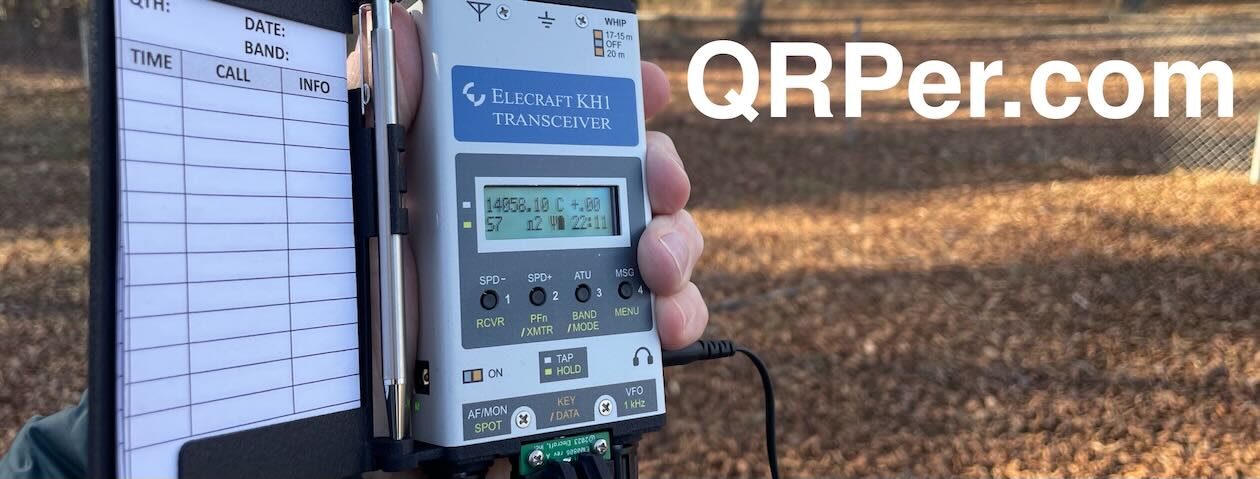 As I drink a cup of coffee and type this post, I’m also packing my camping and radio gear in the car for a four day POTA expedition with my buddy, Eric (WD8RIF). As I mentioned in a previous post, it’s what we’re doing in lieu of going to the 2022 Hamvention.
As I drink a cup of coffee and type this post, I’m also packing my camping and radio gear in the car for a four day POTA expedition with my buddy, Eric (WD8RIF). As I mentioned in a previous post, it’s what we’re doing in lieu of going to the 2022 Hamvention.
I’d planned to write up a field report this morning (I’ve a few in the pipeline) but I simply don’t have the time to do a proper job and I like taking my time with these reports.
Instead, I unearthed a “Hike and Talk” video I made earlier this year and completely forgot about.
Be warned…
 My “Hike and Talk” videos aren’t for everyone. I don’t edit them–they’re pure unscripted stream of consciousness. And they’re quite long by YouTube standards.
My “Hike and Talk” videos aren’t for everyone. I don’t edit them–they’re pure unscripted stream of consciousness. And they’re quite long by YouTube standards.
If this isn’t your sort of thing, just skip this one–I won’t be offended.
On this particular day, I had the future of amateur radio on my mind.
Since it’s been a couple of months since I made this video, I listened to it this morning while packing if for no other reason than to simply refresh my memory. Since I don’t typically do this sort of thing (sharing my thoughts and opinions out there in the public space) I always find it a bit cringe-worthy to review these after the fact. I’m no authority on any topic and never want to paint myself as one, so I typically only discuss these things in interviews and even then, I rarely, if ever, listen my interview post-broadcast (save this one, perhaps).
Proud Prof
But this rambling “Hike and Talk” session reminded me of something that still makes me swell up with pride. I mentioned one ham radio class in particular that I taught for the high school students in our home school cooperative.
It reminded me of a couple of photos I took during that class:
In this first photo (above), I took the class out to the parking lot at the school and I had them set up a (then prototype!) Mission RGO One transceiver on a folding table under a large tree. I had the students erect both an end-fed resonant antenna and a simple 20 meter vertical. I picked the RGO one because all of the adjustments we had talked about in the classroom—AGC, Filters, A/B VFOs, Direct Frequency Entry, Pre Amp, Attenuation—are on the front panel and one button press away. Plus, it’s just a cool radio!
We hopped on the air with one of my students calling CQ (SSB) on the 20 meter band. Her very first contact was with a station in Slovenia—and she simply beamed with excitement. Thank you propagation gods!
In the photo above–taken a week or two later–we were forced to play radio indoors. I’d planned to set up the ALT-512 QRP transceiver outside and see what sort of DX we could work with a simple home brew mag loop antenna. Heavy rains moved in, though, so we moved back to the classroom, they set up the loop in a small window of this large brick building, and we worked station after station on FT8. You can see one student operating, another logging, another looking up each grid square and address, and one at the board calculating how many miles per watt we were achieving with each contact. We had huge fun!
All of the young ladies in my class passed their Technician exam by the end of the term and are all now licensed amateur radio operators. They were all amazing students.
I couldn’t have been more proud of them.
The Video
But I digress. Here’s my “Hike and Talk” video in all its glory:
Click here to view on YouTube.
Thank you!
I hope you enjoyed watching (or skipping) the video!
Of course, I’d also like to send a special thanks to those of you who have been supporting the site and channel through Patreon and the Coffee Fund. While certainly not a requirement as my content will always be free, I really appreciate the support which allows me to open up my work life to write more field reports and film more activation videos.
Here’s wishing you some rewarding radio activity this week!
Cheers & 72,
Thomas (K4SWL)



































